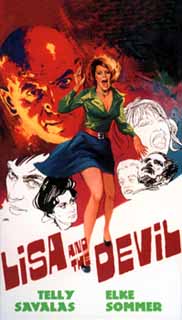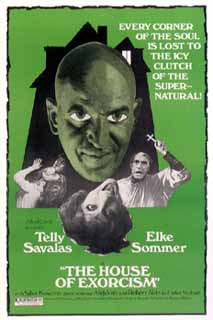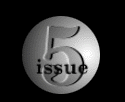|

Karl Malden confronts the killer
in Cat 'O Nine Tails.
The latter part of the decade saw the unfortunate Italian trend toward ripping off popular films from around the world continue to escalate. In 1976-77, there were at least a dozen Nazi-themed sex-horror films hoping to capitalize on the success of Liliana Caviani's The Night Porter and Don Edmonds' Ilsa - She Wolf of the S.S.. An even more copious glut of product followed the 1979 releases of George Romero's zombie epic Dawn of the Dead and George Miller's Mad Max, which resulted in over one hundred Italian variants between them.
Fortunately, not all of the Italian horror films of the 1970s were interchangeable cogs in a bland movie machine. Bava and Argento were at their most energetic, and new talents such as Lucio Fulci, Pupi Avati, Ruggero Deodato and the sadly underrated Francesco Barilli all contributed distinctive and worthwhile films. These films were also training grounds for a crop of young apprentices including Michele Soavi and Lamberto Bava, who would skillfully guide Italian horror through an uncertain future.
Ten Representative Films
Twitch of the Death Nerve (1971)
D: Mario Bava. (aka Bay of Blood; Before the Fact; Bloodbath; Carnage; Ecology of a Crime; Antefatto; Ecologia del Delitto; Reazione a Catena)
A family's murderous battle over some bayfront property is the subject of this viciously bloody giallo-horror, which may be the first modern slasher film. Claudine Auger is wonderful as the scheming daughter of a murdered Countess who is behind the whole thing. Just for fun, four hippies show up in a Speed Buggy-type car led by Brigitte Skay, who dances the Shake and swims naked before having her throat hacked open with a machete. Her boyfriend gets the machete in his face and the other couple has a spear thrust through their bodies as they make love. All of these murders were copied nearly shot-for-shot in Steve Miner's Friday the 13th, Part 2 (1981), and the film's style influenced countless American slasher films of the '70s and '80s. There's also a strangulation by phone cord, a gory decapitation by ax, and a man speared to a wall. If that's not enough to appease bloodthirsty audiences, Bava throws in five other murders as well. For better or worse, this film was quite a trendsetter.
 
Mario Bava's Lisa and the Devil was re-edited
to include exorcism scenes starring Robert Alda
and released as The House of Exorcism.
Perfume of the Woman in Black (1974)
D: Francesco Barilli. (aka Il Profumo della Signora in Nero)
A haunting, surrealistic horror-giallo from the director of the creepy Hotel of Fear ("Penzione Paura") (1977). Barilli's unique hallucinatory style is disorienting and disarming, casting a spell on viewers that is almost hypnotic. This film tells the story of Sylvia (Mimsy Farmer), a chemist who begins to suffer from strange visions. She sees a mysterious woman in black applying perfume in a mirror, strangers following her everywhere she goes and a ghostly little girl who recalls Alice in Wonderland and may be Sylvia herself as a child. It turns out that Sylvia stabbed her mother's sexually abusive boyfriend to death long ago, and now her visions are driving her to madness and cleaver-murders. Or are literally all of her friends Satanists conspiring to cause her suicide? This is a remarkable film, weaving reality, fantasy and memory into an almost seamless fabric to dizzying and poetic effect. The end of the film is like waking from a dream, and all of the inconsistent leaps of logic will infuriate many, but while the film is running, it works and works well. Highly recommended.
Other notable cultist films: Mario Bava's Lisa and the Devil ("Lisa e il Diavolo") (1972) and Sergio Martino's Day of the Maniac ("Tutti i colori del buio") (1972) are the more well-known, but Aldo Lado's Short Night of the Broken Dolls ("La Corta Notte delle Bambole di Vetro") (1971) and Mariano Baino's Dark Waters (1993) are the real gems.
The Tempter (1974)
D: Alberto DeMartino. (aka The Antichrist; Anticristo)
One cannot enjoy genre cinema without being able to appreciate a good rip-off. This possession yarn photographed by Aristide Massaccesi (aka Joe D'Amato) is probably the best of numerous Italian Exorcist clones churned out in the mid-1970s. Carla Gravina plays Hipolita, a paralyzed young woman with serious mental problems stemming from the death of her mother. Her crisis of faith and the intervention of a well-meaning psychologist lead her to remember her past life as a witch during the Inquisition. Eventually, Hipolita becomes possessed and starts picking up young studs and breaking their necks, sleeping with her brother, making a
local sorceror lick barf off her hand and levitating out the window. It takes an exorcism performed by an old monk (George Coulouris) and the family housekeeper (Suspiria's Alida Valli) to set things right. It may sound stupid, but director Alberto De Martino and the talented cast (Gravina is outstanding) manage to raise
their share of goosebumps.
Other notable possessions films: Mario Gariazzo's The Eerie Midnight Horror Show ("L'Ossessa") (1975) and a re-edited version of Mario Bava's 1972 film Lisa e il Diavolo with added toad-vomiting scenes called House of Exorcism ("La Casa dell'Esorcismo") (1976). The most popular Italian devil-movie Stateside was Ovidio Assonitis' Beyond the Door ("Chi Sei?") (1975) starring Juliet Mills of Nanny and the Professor fame. Assonitis later ripped off Jaws with a giant octopus film called Tentacles ("Tentacoli") (1975).
page 1 of 2
 
Italian Horror Menu page
Italian Horror: A Brief Introduction
Mario Bava: The Illusion of Reality
Mario Bava's Rabid Dogs
Mario Bava Biography
The Horrible Dr. Hichcock
The Devil's Commandment 
Castle of Blood 
Nightmare Castle
The Bloody Pit of Horror 
Italian Horror in the Seventies
Suspiria
Italian Horror Web Links
© 1997 Robert Firsching
Photo credits: Hollywood Home Entertainment, Simitar Entertainment, and Video Treasures
| 




